Crows: Everything you need to know about the whole corvid family, from ravens and jackdaws to rooks, magpies, jays and choughs
Clever, companionable and mischievous, the crow or corvid family of birds has long loomed large in our lives and imaginations, as symbols of death and crop destroyers. But, contends Simon Lester, they’re not all black-hearted scoundrels.
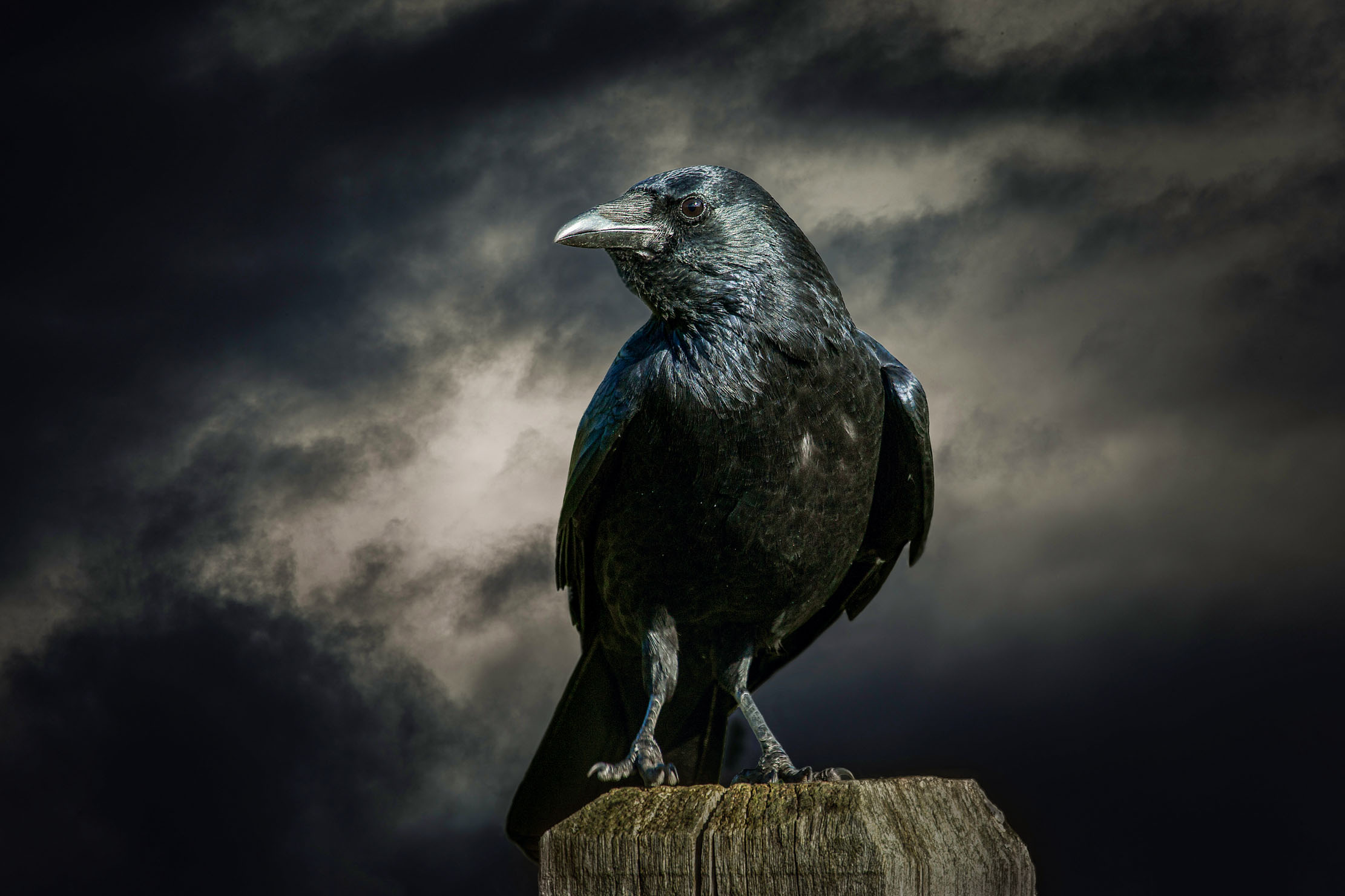
‘If men had wings and bore black feathers,' wrote Henry Ward Beecher, 'few of them would be clever enough to be crows.’ These hugely intelligent and sociable birds are all around us, living alongside us.
The rooks are busy rebuilding their nests, happily cawing away, as they flit to and fro, carrying twigs and other material. Jackdaws are chattering on chimney pots and hollow trees, as carrion crows and magpies are busily staking out their territories — it’s all go in the corvid world.
By this time of year, the mighty raven will have already nested high in a solitary tree or cliff face and the buff-coloured jay, a master of the wood, will be moving stealthily through the trees, only letting out that raucous screech call in alarm.
A guide to Britain's crows and corvids
Raven (Corvus corax)
25in tall; status: green; population: 7,400 breeding pairs
Intelligent, inquisitive and playful, this impressive black bird — with a Herculean wingspan of nearly 5ft — is the largest of the crow family by far, as well as our biggest passerine. Also known as a cronk, due to its distinctive croaking call, it actually possesses a wide vocal range. Equipped with a stout, powerful bill and shaggy throat feathers, these statuesque birds were once heavily persecuted by gamekeepers and shepherds and pushed to remote areas, although their population has since recovered well.
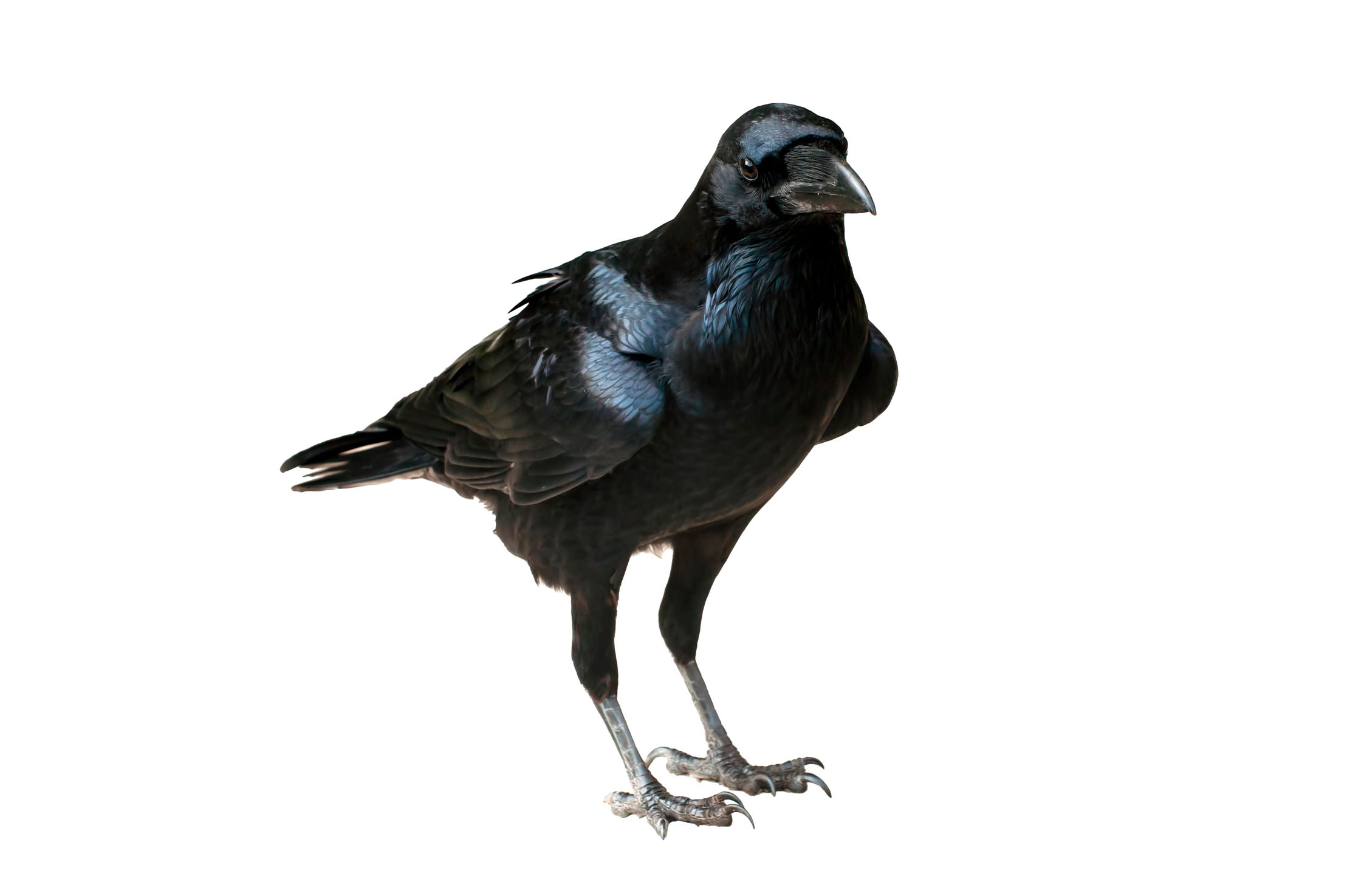
Long associated with all things bad and regarded somewhat superstitiously — not helped by their predeliction for feeding on human corpses hanging from the gibbet, a trait that may have led to their collective noun of an ‘unkindness’ — large flocks of juveniles and non-breeding ravens will fly huge distances and share information to find food, although adult birds are decidedly territorial.
Carrion/hooded crow (Corvus corone; Corvus cornix)
18½in tall; status: green; population: one million/260,000 breeding pairs
Exquisite houses, the beauty of Nature, and how to get the most from your life, straight to your inbox.
At one time, a country saying dictated that ‘if you see rook on its own, it’s a crow, and if you see a flock of crows, they are rooks’, but that no longer applies, as a flock of crows is not a rare sight. Despite having been persecuted for generations by country folk due to their highly honed predatory nature, carrions are doing well in town and country alike. A pair of carrion crows is more solitary, choosing to nest high in a lonesome tree, where they can spy any sign of oncoming danger. In spring, they can be heard cawing away, as they stake claim to their territories.

Although, like most corvids, hooded crows are largely black, they have grey bodies and are mainly found north of the border, where they’re known as corbies. Chillingly, carrions are collectively known as a ‘murder’.
Rook (Corvus frugilegus)
18in tall; status: amber; population: 1.1 million breeding pairs
The gentle sound of rooks cawing is as much a village sound as the thwack of leather on willow on a summer’s day. Unlike carrions and ravens, rooks like to nest communally in a rookery — in the loftiest branches of a wood or spinney — often not far from humans.
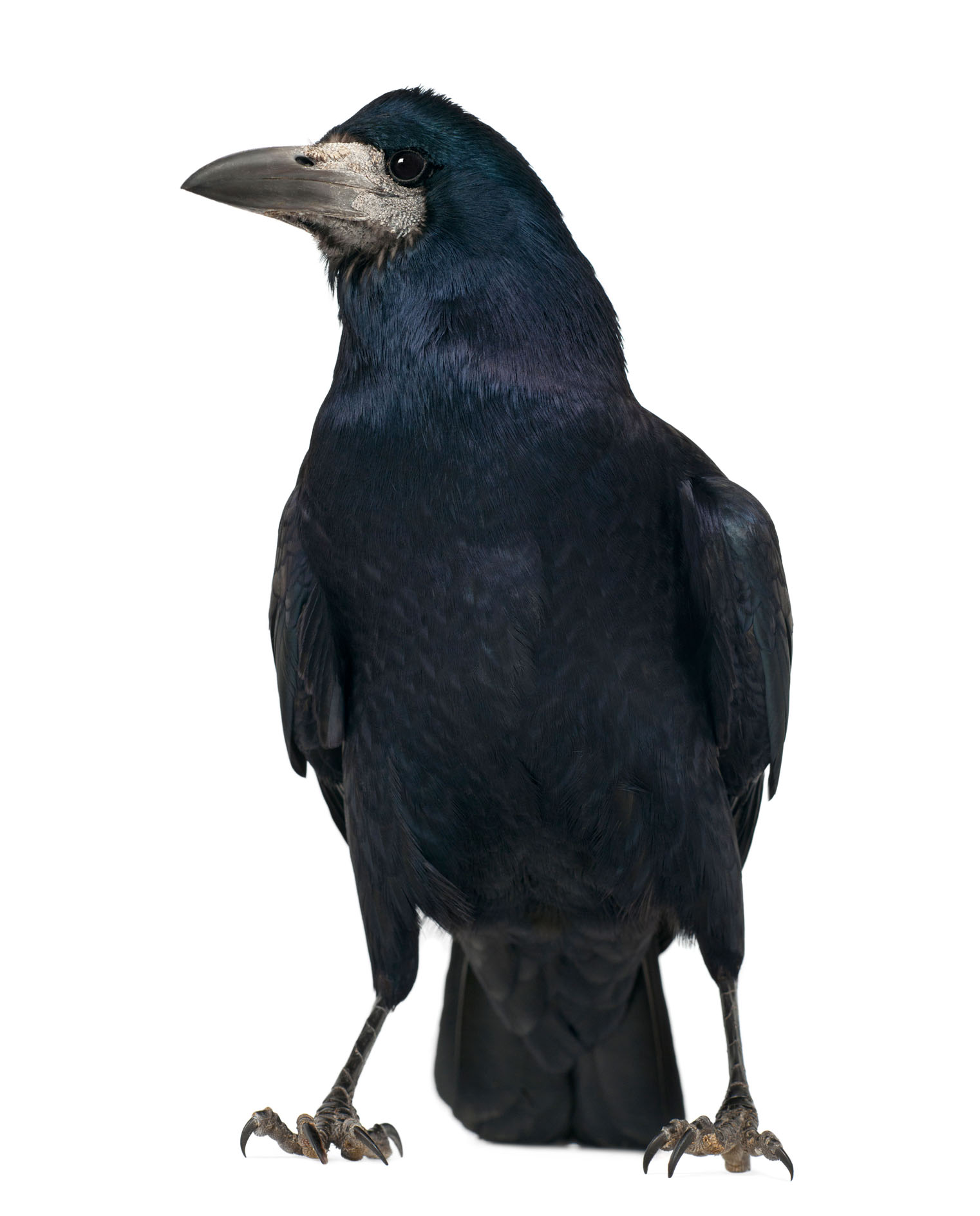
Recognisable by their white featherless face patches, their beaks are more elongated and pointed than that of the carrion and their black, glossy feathers have a purple sheen. Known collectively, rather charmingly, as a ‘parliament’, rooks are a farmer’s friend, as they eat a host of agricultural pests, such as leather jackets and wireworms, and can be seen feeding in large flocks in spring and late summer when crane flies emerge. An annual cull of young rooks called ‘branchers’ used to see the flightless birds shot with rook rifles, as they hopped from branch to branch. They were then baked in a rook pie.
Jackdaw (Corvus monedula)
13in tall; status: green; population 1.4 million
The jackdaw is the smallest of the corvid family, easily recognised by its grey head and, up close, its piercing, light-blue eyes. Fond of nesting in holes, trees, cliffs and buildings, they’re responsible for many a blocked chimney. A noisy lot, often heard tchack-ing and keeya-ing away around towns and villages, their population surged by 150% between 1970 and 2013.

Like magpies, they love to collect objects and have historically been associated with thieving. Together with rooks, streams of jackdaws congregate to form great black ribbons in the winter sky, as they travel to their winter roosts, which can accumulate to thousands of birds.
Magpie (Pica pica)
18in tall; status: green; population: 600,000 breeding pairs
Arresting and loud, the magpie sticks out by a mile in both town and country. However, although they appear to be wholly black and white, in reality, they only have purely black heads, as their wings and long tail are an attractive iridescent dark-green.
Their chattering chacha-chacha-chak call always gives away their presence, not least in murder-mystery television programmes, such as Midsomer Murders. Magpies construct imposing, yet messy, domed nests made of sticks, often lined with clay.
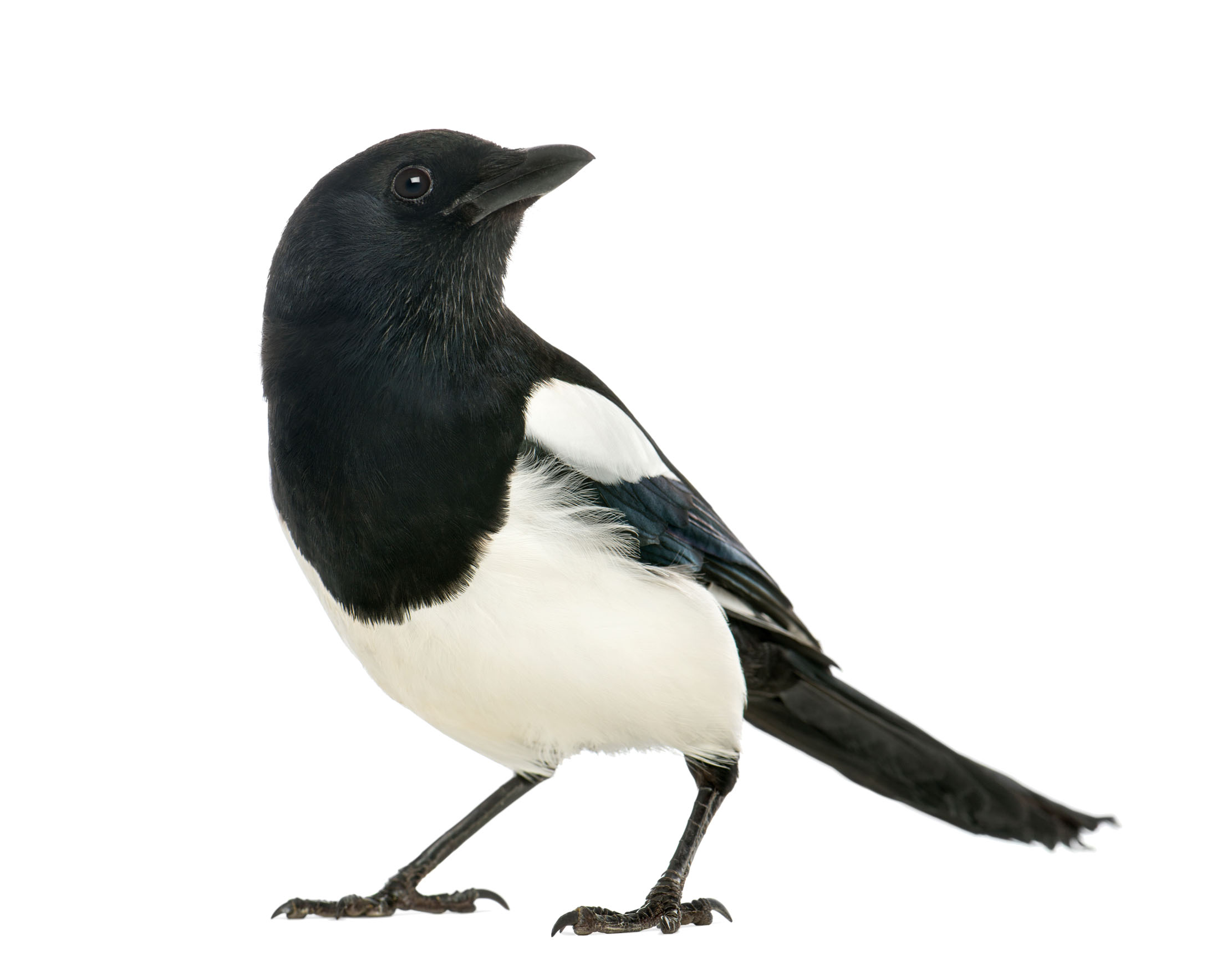
Historically branded as thieves, thanks to their appetite for shiny objects and other birds’ eggs and nestlings, they’re increasing in numbers, especially in suburban areas where they were once unknown.
The Duke of Portland’s gamekeepers were banned from killing magpies, as his racing colours were black and white, and ‘Up the Magpies!’ is a rallying cry for Notts County football supporters.
Jay (Garrulus glandarius)
13½in tall; status: green; population: 170,000 territories
With a soft-pink back, bright-blue wing flashes and a captivating undulating flight that reveals a white rump and wing patches, the dandy jay stands out from the rest of the crow family. A woodland specialist, it moves discreetly through cover, where it’s often heard before seen, warning off any intruders with a raucous scream. When alarmed, its striped crown becomes a crest.
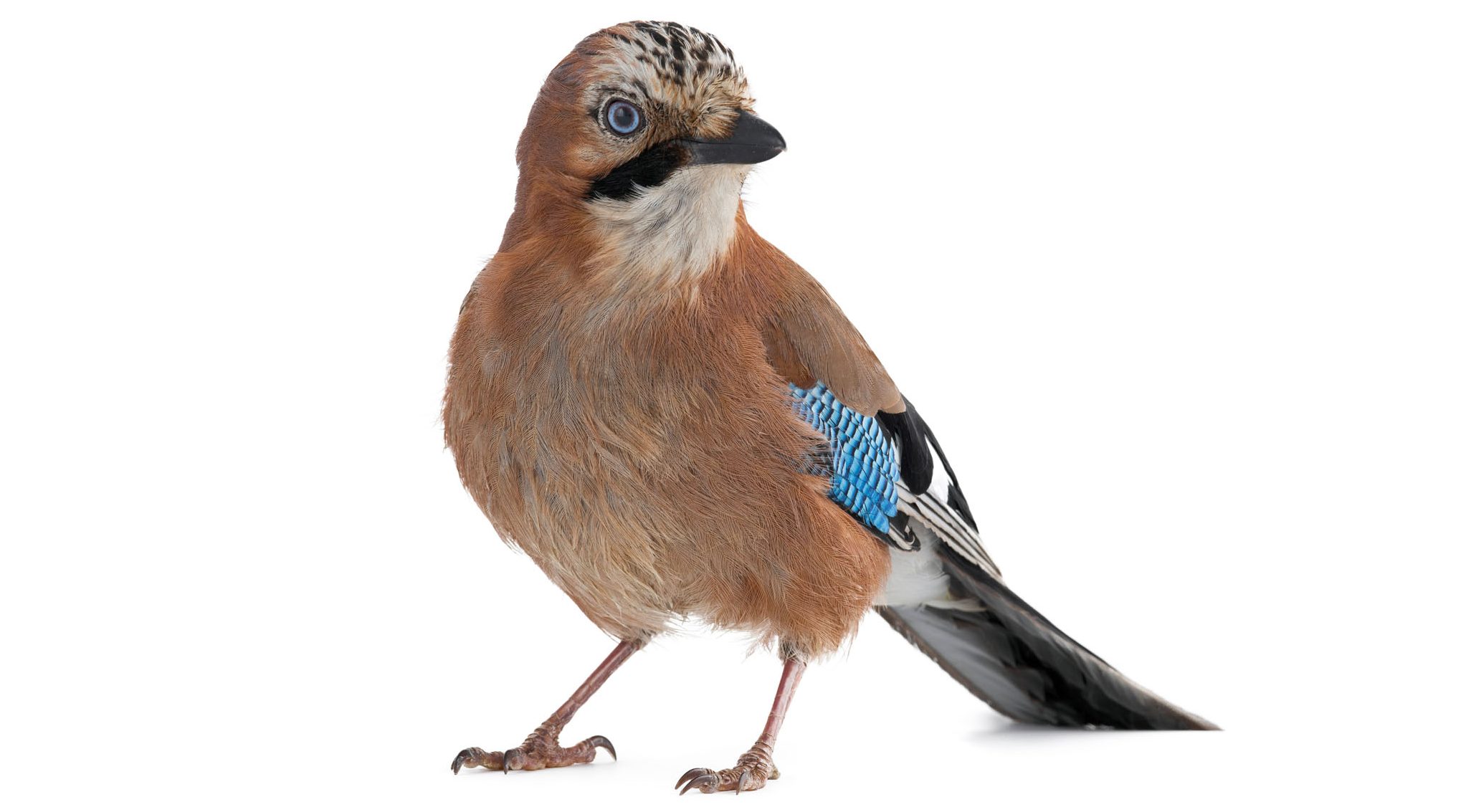
As do other members of the crow family, jays cache food, particularly their favourite snack of acorns. However, unlike the grey squirrel, which bites the acorn to stop it growing, the jay — an accidental conservationist — buries them, thus allowing any forgotten acorns to germinate and grow into trees. Our resident population is boosted by migrants from Scandinavia.
Chough (Pyrrhocorax pyrrhocorax)
15½in tall; status: green; population: 350 breeding pairs
Definitely the odd one out, the chough has garish red legs and a red bill that is a totally different shape — being longer and curved — than the rest of its brethren, plus a glossy, purple-black plumage. They are the only members of the family that are not doing well: choughs are a schedule-one species, confined to the west of the British Isles, mainly on the coast.

Once shot for feeding on grain, their main diet is insects. Masters of the air, accompanied by an excitable keeaar call — their collective name is a clattering — they can also be seen doing victory-style rolls, a characteristic of several members of the corvid tribe.
It is the national bird of Cornwall, where it was believed King Arthur did not die, rather, his spirit entered into that of a chough.
The success of crows and corvids
Corvids are some of the most intelligent species of bird on the planet, thriving thanks to being generalist feeders that enjoy a wide-ranging diet from seeds and insects to meat, dead and alive. They’re monogamous and sociable. It’s because of these characteristics that this supremely successful family has always come into conflict with Man. Long before game shooting, gamekeepers or conservation, creatures that deprived us of precious food or affected our standard of living were on the hit list.
An old farming rhyme, ‘one for the rook, one for the crow, one to rot and one to grow’, illustrates the perceived impact of corvids on crops, giving rise to the deployment of Worzel Gummidge and his scarecrow mates. Children were sent to the fields with clappers and flags to keep the birds off the drilling and, later on, to protect the ripening corn from flocks of rooks, jackdaws and crows. A fondness for the eggs and chicks of barnyard hens did them no favours, either. Worst of all is their penchant for plucking the eyes from a stranded ewe or lamb or disembowelling unfortunate sheep.
Stone the crows: corvids in myth and legend
• ‘Four and twenty blackbirds baked in a pie’ actually referred to rook pie• The Scandinavian god Odin kept two pet ravens, Huginn (Norse for thought) and Muninn (memory), that told him every secret seen or whispered around the world• As the crow flies means to travel in a straight line• If the ravens ever leave the Tower of London, the Tower will fall, together with the kingdom• Alfred Hitchcock’s 1963 film The Birds, inspired by a Daphne du Maurier short story, horrified audiences

• Ravens feature in the stories of the Valkyrie in Norse mythology, in which they represent female figures that choose who will live and die in battle• Crows were believed to embody the souls of those who had taken their own lives• Legend also decreed that, originally, they were all white, but turned black when mourning the crucifixion, except the magpie, which refused to grieve for Jesus• Shakespeare’s works are full of references to corvids. Lady Macbeth cries: ‘The raven himself is hoarse/That croaks the fatal entrance of Duncan/Under my battlements.’ Macbeth himself says: ‘It will have blood, they say./Blood will have blood./Stones have been known to move and trees to speak./Augurs and understood relations have/By maggot-pies and choughs and rooks brought forth the secret’st man of blood.’ In Othello, Iago utters: ‘I will wear my heart upon my sleeve/For daws to peck at.’• Edgar Allan Poe’s poem The Raven, published in 1845—which contains the line ‘darkness there and nothing more’—tells the story of a man’s slow descent to madness after being visited by a talking raven• Throughout his life, Charles Dickens was devoted to a host of pet ravens—all called Grip—one of which he chose to feature in Barnaby Rudge
Should we protect crows? The case for and against
Overall, the corvid family is doing well. Most are increasing substantially or are stable at high numbers, with the exception of the red-legged and billed chough, which is now restricted to the West and the Isle of Man.
The Agricultural Revolution, from the mid 17th to late 19th centuries, perhaps gave corvids a boost, but that was soon followed by the advent of the preservation of game, with an army of gamekeepers employed to protect and nurture wild grey partridges, pheasants and grouse. From then, and up to the 1970s, poisoned eggs and baits would have been the preferred way to control numbers.
All but the chough are efficient predators of the eggs and chicks of any bird; they’re often seen on a vantage point, waiting and watching for the unsuspecting adult birds to leave or return to their nest. Other equally deadly tactics include the active quartering of open ground or meticulous hunting through woodland or hedgerow, as well as distraction and diversion techniques. It is a natural defence for the adults of the prey species to try to repel a hunting crow; but, often, as an aerial dog fight ensues, another family member takes the prize.
Anecdotally, generations of folk that have lived and worked in the countryside will have the view that corvids predating eggs and chicks affects other bird populations. The science may be less convincing and, as ever, we hear more research is necessary. Many conservationists don’t want to protect one species from another at any cost.
The entire corvid family is now protected by the Wildlife and Countryside Act of 1981, but all bar the chough and the raven can be controlled under the various General Licences, which are complicated and will deter some from conducting legal control.

Although human activity has had a detrimental effect on much of our flora and fauna, it has given some species — notably corvids — a boost. We’re fuelling them through maize crops, outdoor pig units, the release of too many game birds and general human detritus — added to the fact that fewer of us control them these days. Predation is a complex natural event and its effect on a species can rarely be attributed to the factor alone — there’s always more than one reason for a creature’s decline. However, with the corvid population rising so rapidly, is it correct and sensible to make controlling their numbers more difficult? Surely, with so many of our bird populations declining to the point of local extinction and many more at perilously low levels, we should be prepared to take more stringent action?
For the sake of the animals that we say we want to save, it’s timely to look at what has happened in Holland, where it seems that over-protection of some species — by placing greater legal restrictions on controlling them — has coincided with large expansions of predators, to the detriment of struggling wader populations.
Since the Dutch curtailed the use of Larsen traps — in which carrion crows and magpies can be caught and dispatched — under a general licence in 2007, it’s almost impossible to obtain permission to use one. We should heed the words of Eddie van Marum, who’s been working on farmland conservation projects for more than 30 years in his native Groningen province: ‘You cannot control crows by shooting alone and Larsen traps are highly effective at catching egg-finding specialists. But, whenever a licence is granted, animal-rights organisations fight it in court and generally win. Although, on paper, everything seems to be possible, national legislation in the form of a licensing system still acts like a brake on conservation.’

Britain’s birds of prey: The Country Life guide to all of the UK’s raptors
Raptors’ supersonic vision, effortless aerial acrobatics and ruthless hunting instinct make them the undisputed masters of the skies, but can

Credit: Getty / Duncan Usher / Minden Pictures
Beware the Great Grey Shrike: The pretty songbird with the temperament of Vlad the Impaler
Simon Lester takes a look at the great grey shrike, a delicate-looking songbird whose innocent appearance belies its sadistic tendencies

Credit: Alamy Stock Photo
How white-feathered barn owls terrify their prey into submission: 'It’s like a ghost coming on it'
Scientists have found white owls are superior in their hunting ability to their darker counterparts.